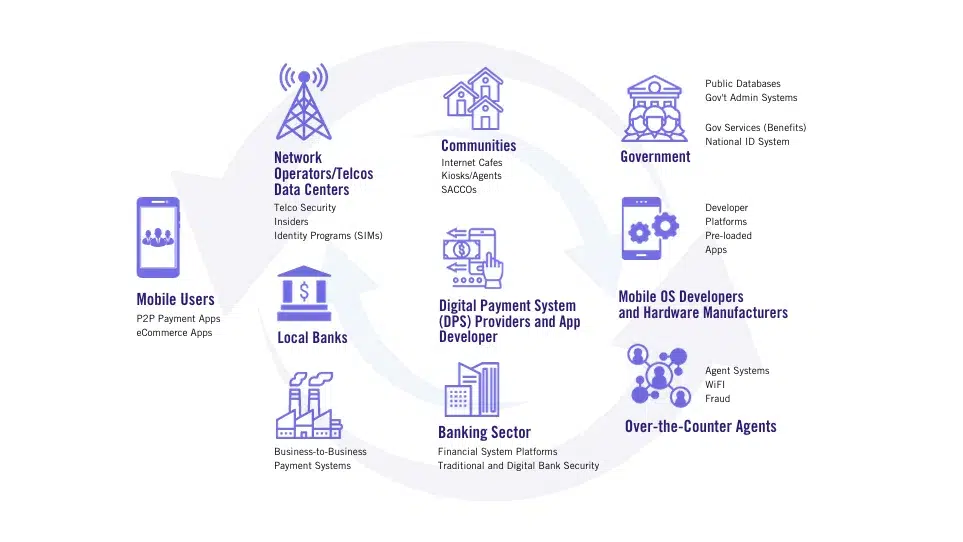
Securing the Digital Financial Ecosystem Abroad


For decades, the United States has been at the forefront of semiconductor innovation, leading the globe exponentially in advanced technological research. Despite these advancements being discovered and patented here in the United States, our lack of manufacturing capability means that other nations, both allied and adversarial, have outpaced us in the delivery of these innovations. The passage of the CHIPS and Science Act begins the process for a reversal of America’s downturn in semiconductor manufacturing, opening the door for job growth all across the industry from the factory floor to the executive suites. A resurgence of this far-reaching industry will create high-paying technical, manufacturing, and research jobs, as well as indirectly influence job growth in dozens of other industries.
With tens of billions directly allocated to spur growth in this essential industry, now is the time for us to focus on a critical challenge: ensuring that as this industry grows exponentially, we create a pipeline for the next generation of semiconductor workers, from the manufacturing floor to the design suites. The semiconductor industry’s growth will ripple throughout the nation, creating both direct and indirect job opportunities – it is up to us to see that the impact of this legislation is felt far beyond the initial investment, planting the seeds for America’s leadership from lab to fab for decades to come.
“The most important, and one of the most vulnerable, supply chains the American semiconductor industry is facing today is the supply chain of human talents,” Mung Chiang, Purdue University’s executive vice president for strategic initiatives and dean of its engineering college, told Axios earlier this year. “The total number of STEM-oriented students in this country is not big enough already, and the slice of that pie going into semiconductors is also not the most promising.”[1]
Towards the end of 2021, SEMI member companies reported more than 34,000 unfilled jobs[2], and a SEMI & MITRE Engenuity 2022 Supply Chain Survey Report found a shortage of talent to fill critical manufacturing roles including both entry and senior level engineers and technicians.[3]
These tens of thousands of unfilled jobs represent just one piece of this workforce development puzzle. The SEMI/MITRE Engenuity survey suggested that problems in hiring senior-level engineers indicate significant challenges in both retaining and growing talent within the industry.[4] “The stress on our industry and our economy is increasing,” says Scott Balaguer, chair of SEMI’s North American Advisory Board. “We need to figure out how to work cooperatively to attract, retain, and train up the diverse workforce that we require. Now.”[5]
Educating, training, and reskilling generations of American innovators and fabricators is central to the MITRE Engenuity led Semiconductor Alliance’s vision for the future of a resurgent semiconductor industry in America. Workforce development is a lynchpin that holds together their blueprint for incentivizing domestic semiconductor ecosystem investments, accelerating American semiconductor research, and ensuring a long-term robust semiconductor industry in the United States.
While programs currently exist in the semiconductor ecosystem to grow and foster talent, few operate beyond local scale, making them insufficient to meet the growing nationwide demand for semiconductor talent. The Semiconductor Alliance’s vision for the National Semiconductor Technology Center (NSTC) and National Advanced Packaging Manufacturing Program (NAPMP) involve leveraging and scaling these existing programs, maximizing their impact across the nation.
Outreach and research from The Semiconductor Alliance show that companies in the semiconductor industry tend to support joint workforce development programs through industry organizations like SEMI and the Semiconductor Research Corporation (SRC) rather than through direct partnerships among themselves. By working closely with universities, The American Semiconductor Academy (ASA), SEMI, and the SRC, the NSTC and NAPMP can bridge the gap between early-state education where students gain the required academic skills and the hands-on practical know-how needed for a productive and motivated workforce.
In extensive conversations with stakeholders, The Semiconductor Alliance has unearthed one constant theme: ensuring the industrial relevance of academic curricula and training opportunities. Too often, they are simply theoretical or focused on environments and tools unlike what students might encounter in actual industry facilities.
To that end, the NSTC should develop hands-on research, training, and career advancement opportunities for students and early-career staff, such as:
Making employees available for assignment to the NSTC will enable organizations to gain exposure to future-generation processes, tools, challenges, and needs. Offering the chance to work on challenging, pressing technological problems can serve as inspiration for ambitious workers across the semiconductor ecosystem, and the NSTC can provide them with an attractive opportunity for hands-on experiences with new technology. Coupled with the involvement of leading experts in the field, the opportunity to collaborate within the NSTC will make this a hub for developing the next generation of semiconductor technology and the next generation of the semiconductor workforce.
More than growing careers and sharing knowledge, a hyper focus on workforce development within the semiconductor industry presents a unique opportunity to put a necessary focus on encouraging historically underrepresented communities to expand their presence within the industry. Women and underrepresented students within STEM degree programs and jobs have distinct value throughout the whole semiconductor ecosystem, and utilizing the NSTC to build upon the critical skills they’re already learning will help solidify a more equitable, more successful industry.
Today’s semiconductor workforce, and lack thereof, is a cautionary tale. Ensuring that our past mistakes aren’t repeated will take a concerted effort from industry, academia, and government combined. The direct investment from the CHIPS and Science Act give this industry the impetus it needs to right the ship and sail forward into a bright semiconductor future. Orienting ourselves towards a robust, diverse, active workforce, will ensure that no matter how choppy the waters are, the semiconductor industry in America will stay afloat for generations to come.
[1] https://www.axios.com/2022/03/23/chip-makers-labor-market-squeeze
[2] https://www.semi.org/en/blogs/technology-trends/retention-key-to-winning-talent-war
[3] https://discover.semi.org/mitre-engenuity-survey-report.html#band3Form
[4] https://discover.semi.org/mitre-engenuity-survey-report.html#band3Form
[5] https://www.semi.org/en/blogs/technology-trends/collaborating-to-tackle-chip-industry-retention-inclusion-and-workforce-shortage-challenges